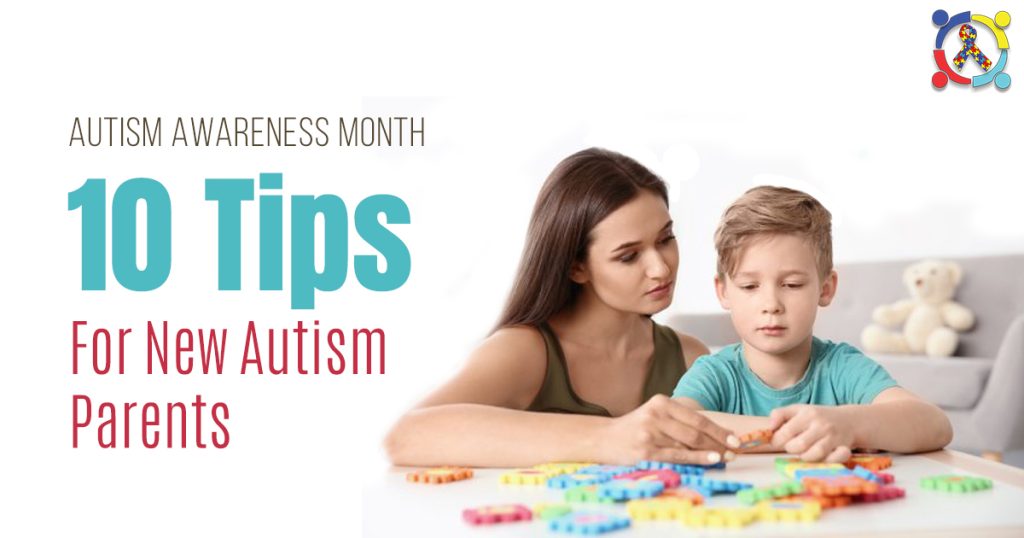Imagine your toddler taking a soothing bath that not only relaxes them but also potentially aids their speech development. This isn’t just a fantasy; it’s a real possibility with detox baths tailored for toddlers with speech delay.
As a parent, you want nothing more than to help your child communicate effectively. You might feel anxious about their progress, but you’re not alone. Many parents share this concern, and there are gentle, natural ways to support your child’s journey.
You’re about to discover how a detox bath can be a simple yet powerful addition to your child’s routine. Imagine transforming bath time into a nurturing experience that supports their health and speech development. The idea of helping your child while they splash around in warm water is not only appealing but also achievable. Keep reading to learn how this can become a comforting ritual, providing both relaxation and potential benefits for your little one’s speech journey.
Benefits Of Detox Baths
Detox baths are gaining popularity for their potential benefits in supporting toddlers, especially those with speech delays. These baths involve soaking in water infused with natural ingredients to help eliminate toxins from the body. They can offer several advantages that may aid in the overall well-being of your little one.
Improving Mental Clarity
A detox bath can potentially improve mental clarity in toddlers. The calming effects may help clear the mind. This clarity can support cognitive functions. It might make communication a bit easier for toddlers with speech delay. Simple ingredients such as Epsom salts are often used. They are known for their ability to relax the mind and body.
Enhancing Relaxation
Detox baths are known for enhancing relaxation. The soothing properties help calm the nerves. This relaxation can be beneficial for toddlers. It may create a peaceful environment. A relaxed toddler might be more receptive to communication. Chamomile or lavender oils are popular choices. They are often used for their calming effects.

Credit: www.gentlenursery.com
Speech Development In Toddlers
Speech development is a crucial part of a toddler’s growth. It involves learning sounds, words, and sentences. Every child grows at their own pace. Parents often worry about speech delays. Understanding typical milestones helps track progress. Recognizing signs early aids in finding solutions. This section explores speech milestones and signs of speech delay.
Typical Speech Milestones
By age one, toddlers often say their first word. They may imitate sounds and gestures. Between 18 months to 2 years, vocabulary expands. Words combine into short phrases. Questions like “What’s that?” begin. By age three, sentences form. Toddlers understand simple instructions. They ask many questions. Speech becomes clearer and more organized.
Signs Of Speech Delay
Speech delay can vary. Some signs are noticeable. By 12 months, a lack of babbling may occur. Few or no words by 18 months is concerning. Limited vocabulary by age two signals delay. Trouble following simple directions is another sign. Frustration during communication is common. If speech sounds unclear after age three, it may indicate a delay. Early assessment and intervention are crucial.
Role Of Detox Baths In Speech Enhancement
Many parents seek natural ways to help toddlers with speech delays. Detox baths may play a supportive role in enhancing speech development. These baths involve using specific ingredients to draw out toxins from the body. The process may contribute to improved brain function and reduced stress. Both factors are essential for speech enhancement in young children.
Supporting Brain Function
Detox baths can help improve brain function. They remove harmful substances from the body. This cleansing process supports clearer thinking and better concentration. Magnesium, often used in detox baths, aids in neural development. It helps the brain perform at its best. A well-functioning brain is vital for speech development.
Reducing Stress And Anxiety
Toddlers with speech delays may experience stress and anxiety. Detox baths can soothe these feelings. Warm water relaxes the body and mind. Essential oils, like lavender, enhance relaxation during baths. Lower stress levels create a calm environment for learning. This calmness supports speech practice and improvement.
Safe Ingredients For Detox Baths
Detox baths can be a calming ritual for toddlers with speech delay. They offer a gentle way to relax and detoxify. Choosing safe ingredients is vital for your toddler’s sensitive skin. These ingredients ensure safety while providing beneficial effects.
Epsom Salt
Epsom salt is a popular choice for detox baths. It contains magnesium sulfate, which relaxes muscles and soothes the skin. The mineral content helps in relieving stress and enhancing mood. Use about one cup of Epsom salt in a toddler’s bath. Ensure it dissolves completely before bathing. This prevents any irritation or discomfort.
Essential Oils
Essential oils add soothing aromas to a detox bath. Lavender oil is a favorite for its calming properties. It can help reduce anxiety and improve sleep. Just a few drops are enough for a toddler’s bath. Ensure the oil is diluted well in the water. This avoids any skin irritation. Choose essential oils labeled safe for children. Always test a small amount on your child’s skin first. This checks for any allergic reactions.
Creating A Therapeutic Bath Environment
Creating a calming bath for toddlers can support their well-being. A detox bath may help soothe and relax little ones with speech delays. Using gentle, natural ingredients in warm water can create a peaceful environment, potentially aiding in relaxation and speech development.
Creating a therapeutic bath environment for toddlers with speech delay can be a nurturing and transformative experience. It is more than just a bath; it’s a space where your child can feel relaxed, stimulated, and connected. By focusing on the sensory elements, you can create a setting that encourages communication and emotional expression.
Setting Up The Bath
Begin by ensuring the water temperature is comfortable—neither too hot nor too cold. This simple step can make a significant difference in how your child responds to the bath. Add natural elements like Epsom salts or gentle essential oils such as lavender to promote relaxation. Be mindful of allergies and sensitivities, and always choose child-friendly products. Consider using toys that encourage interaction. Bath toys that squirt water or light up can be both fun and stimulating, helping your child engage with their environment.
Using Music And Lights
Playing soft, calming music can transform bath time into a serene retreat. Choose tunes that your toddler enjoys, perhaps even songs with simple lyrics to encourage vocal attempts. Experiment with gentle lighting to create a soothing ambiance. Use dimmers or battery-operated candles to offer a warm glow, reducing anxiety and making the bath more inviting. Try incorporating a mini light show with waterproof LED lights. This can captivate your child’s attention, opening up opportunities for interaction and speech practice. A therapeutic bath environment is not just about relaxation; it’s a chance to spark curiosity and communication. How can you tailor these elements to fit your child’s needs?
Monitoring Progress And Adjustments
Tracking changes in toddlers after detox baths can aid speech delay improvements. Adjust treatments based on observed progress. Regular monitoring ensures the bath remains beneficial and safe for your child.
Embarking on a detox bath journey for your toddler with speech delay requires patience and careful observation. It’s essential to monitor progress and make necessary adjustments to ensure the bath is beneficial. This process isn’t just about sticking to a routine; it’s about being attentive to your child’s unique responses and making informed tweaks along the way. ###
Observing Communication Changes
Pay close attention to any shifts in your toddler’s communication abilities. Are they attempting to form new words or sounds? Do they seem more responsive when spoken to? Create a simple log to track these observations. Note specific instances when your child appears to communicate more effectively. This could be during playtime or when interacting with family members. Discuss these observations with a speech therapist, who can provide insights into whether the detox baths might be contributing to progress. They may also suggest additional strategies to support your child’s speech development. ###
Adjusting Bath Ingredients
Not all toddlers will respond the same way to detox bath ingredients. Have you noticed any skin irritation or changes in behavior? If so, it might be time to adjust the bath ingredients. Start with the basics like Epsom salt, which is known for its calming properties. Gradually introduce other elements like baking soda or essential oils, one at a time. Observe how your toddler reacts to each addition. Consult with a pediatrician or a holistic health expert to tailor the ingredients to your child’s needs. They can help ensure the bath remains safe while maximizing its potential benefits. Taking the time to monitor and adjust the detox bath process can make a significant difference. How will you track the changes and refine your approach for the best outcomes?
Consulting Healthcare Professionals
Consulting healthcare professionals is crucial when considering detox baths for toddlers with speech delay. Their expertise ensures safe and effective practices. Understanding the benefits and possible risks is essential. Parents often feel overwhelmed by information. Professional guidance simplifies this journey.
Seeking Expert Advice
Parents should reach out to pediatricians and specialists for advice. These experts understand speech delay nuances. They can offer insights on suitable detox baths. A pediatrician assesses a child’s health status. This ensures that detox baths are appropriate. Speech therapists can recommend complementary activities. Their advice aids in holistic development.
Incorporating Professional Recommendations
Professionals suggest personalized detox bath methods. Their recommendations cater to individual needs. A pediatrician might suggest specific bath ingredients. These ingredients can enhance relaxation and comfort. Speech therapists may advise integrating communication exercises. Combining both can aid in speech improvement. Following their guidance ensures safe practices.

Credit: www.tiktok.com

Credit: www.instagram.com
Frequently Asked Questions
How To Help Toddlers With Speech Delay?
Encourage speech by talking to toddlers regularly. Read books together and sing songs daily. Use simple, clear words. Engage in interactive play to stimulate language development. Consult a speech-language therapist for professional guidance if needed.
Can Toddlers Take Detox Baths?
Toddlers can take detox baths with caution. Use gentle, non-irritating ingredients like Epsom salt in small amounts. Always consult a pediatrician before introducing new bath routines. Keep the bath short and monitor your child for any adverse reactions.
What Are The Symptoms Of Detox In Toddlers?
Detox symptoms in toddlers may include irritability, fatigue, headaches, mood swings, and digestive issues. Skin rashes or mild fever can also occur. Always consult a pediatrician if concerned about detox symptoms in toddlers. Proper hydration and balanced nutrition can help alleviate discomfort during detoxification.
Does Epsom Salt Remove Heavy Metals?
Epsom salt does not effectively remove heavy metals from the body. It is primarily used for muscle relaxation and soothing baths. Consult healthcare professionals for proper heavy metal detox methods.
Conclusion
A detox bath offers gentle support for toddlers with speech delay. It helps relax their body and mind. Parents find it easy to prepare and use. Simple ingredients make it accessible for everyone. Warm water soothes muscles and calms nerves.
This routine can complement speech therapy sessions. Always monitor your child’s comfort during bath time. Consult a pediatrician for personalized advice. Every child is unique; results may vary. With patience and care, small steps lead to progress. Try this soothing approach to aid your toddler’s speech journey.

